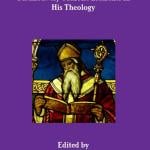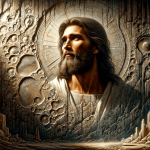
This new item, by Matthew Scott Stenson, went up earlier today in Interpreter: A Journal of Latter-day Saint Faith and Scholarship:
““Wherefore, for This Cause”: The Book of Mormon as Anti-type of the Brass Serpent”
Abstract: Nephi1 represents the sacred record that becomes the Book of Mormon as a new brass serpent to heal the nations. Nephi’s typological project is reasonable given that he self-identifies with Moses, his family’s scriptures and compass are made of brass, and he consistently describes reading as an act of seeing, looking, or believing. Nephi understands from Isaiah that the book he (Nephi) prepares — and that he has so much to say about — will become an ensign, or sign, that will be lifted up and heal the nations that have stumbled in blindness. Nephi’s project emerges most fully in 2 Nephi 25, the introductory material to an extended prophecy wherein he points the Jewish people to their Messiah, a figure he equates with Moses’s raised serpent and Jesus Christ.
***
I enjoyed this twelve-minute video, and I commend it to your attention:
“‘Jesus is Real!’ Calyann’s Experience with the Book of Mormon”
***
After long years of devastating blight that began when I moved into the community, my neighborhood is looking up in major ways: A really good venue for community theater is being built just minutes from us, the new Orem Utah Temple is rising within (I think) the boundaries of our geographically small stake (and, if not within it, certainly close to its boundary), and a new art museum is going in just around the corner from our house.
The new UVU Museum of Art gives us particular pleasure. Melanie Bastian was a neighbor, a member of our ward (a former Relief Society president), and a very good personal friend (especially to my wife). To say that we’re thrilled to see her house used in this way would be a considerable understatement.
***
Now this is interesting: “6 women have been called as international area organization advisers in Europe. Here’s what that means”
***
Another item on the recent hit Netflix series:
“The underreported church response to the deceptions recounted in ‘Murder Among the Mormons’”
***
This is, to me both sad and happy news. Bittersweet:
***
For those who may have missed them when they first appeared, or who would benefit from being reminded of them, here are links to a few articles from a previous volume of Interpreter: A Journal of Latter-day Saint Faith and Scholarship:
Gregory L. Smith, “Cracking the Book of Mormon’s “Secret Combinations”?”
Abstract: The Book of Mormon has been explained by some as a product of Joseph Smith’s 19th century environment. Advocates of this thesis have argued that the phrase secret combinations is a reference to Freemasonry, and reflects Joseph’s preoccupation with this fraternity during the Book of Mormon’s composition in 1828–29. It is claimed that this phrase is rarely, if ever, used in a non-Masonic context during 1828–29, and that a type of “semantic narrowing” occurred which restricted the term to Freemasonry. Past studies have found a few counter-examples, which are reviewed, but none from during the precise years of interest. This study describes many newly-identified counterexamples, including: anti-Masonic authors who use the term to refer to non-Masonic groups, books translated in the United States, legislature bills, grand jury instructions, and works which so characterize slave rebellions, various historical groups and movements, Biblical figures, and religious groups. These examples are found before, during, and after the critical 1828–29 period. Examples from 1832 onward likewise demonstrate that no semantic shift occurred which restricted secret combination to Masonry. This element of the environmental hypothesis has now been robustly disproven.
Abstract: The best available evidence for the Book of Mormon continues to support a limited Mesoamerican model. However, Alma 63 indicates that there was a massive northward migration in the mid-first century bc. I argue that these north-bound immigrants spread out over the centuries and established settlements that were geographically distant from the core Nephite area, far beyond the scope of the text of the Book of Mormon. I introduce the Hinterland Hypothesis and argue that it can harmonize the Mesoamerican evidence for the Book of Mormon with Joseph Smith’s statements concerning Nephite and Lamanite material culture in North America. Archaeological and anthropological evidence is used to demonstrate that migrations and cultural influence did in fact spread northward from Mesoamerica into North America in pre-Columbian times.
Abstract: Scholars from many religious backgrounds — including Latter-day Saints — have noted both temple themes and parallel structures in the Jacob Cycle (Genesis 28-35). The present paper surveys that body of work and then offers a new structural understanding of the text, one that is uniquely LDS. This interpretation focuses on the entwining of temple and family themes in the narrative, showing how the form of the text uses each to support the other.
Orson Scott Card, “Christmas Is About a Baby”
Stanford Carmack, “What Command Syntax Tells Us About Book of Mormon Authorship”
Abstract: The variety of command syntax found in the Book of Mormon is very different from what is seen in the King James Bible. Yet it is sophisticated and principled, evincing Early Modern English linguistic competence. Interestingly, the syntactic match between the 1829 text and a prominent text from the late 15th century is surprisingly good. All the evidence indicates that Joseph Smith would not have produced the structures found in the text using the King James Bible as a model, nor from his own language. The overall usage profile of command syntax seen in the Book of Mormon strongly supports the view that the Lord revealed specific words to Joseph Smith, not simply ideas.
***
And, last but very definitely not least, I’m sending my heartiest best wishes to Professor Louis C. Midgley, a dear friend, who is celebrating the sixty-ninth anniversary of his twenty-first birthday today.










